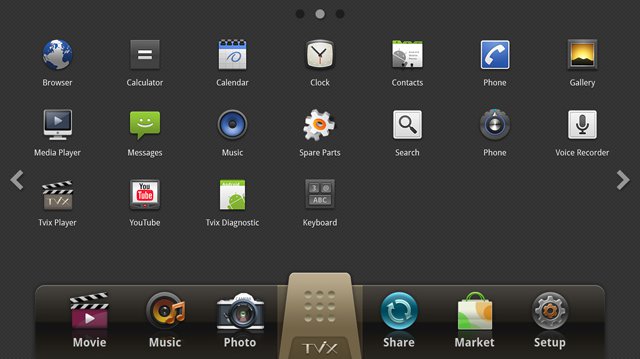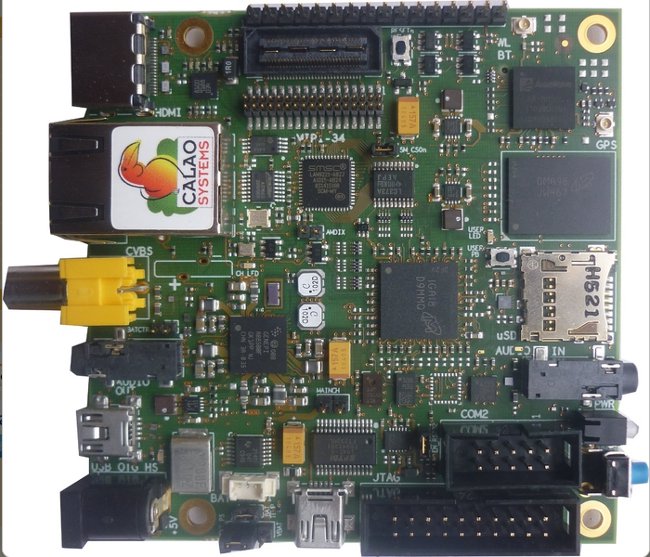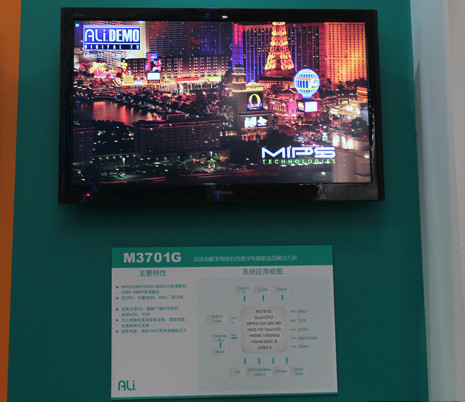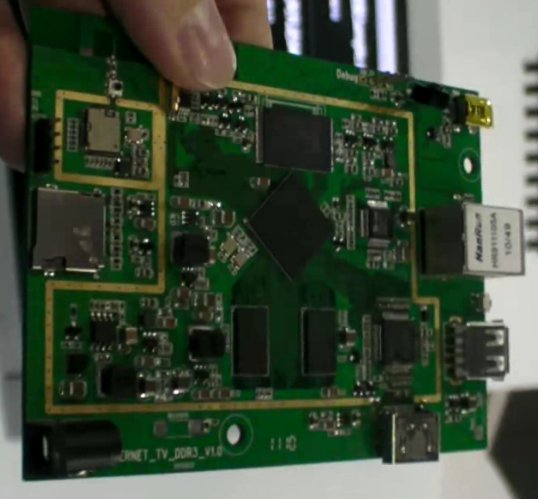Back in November 2010, Sigma Designs and Dvico announced the first Android Set-top Box based on SMP8656 series would be available by Q1 2011. However, porting Android to a media player platform is rather time consuming and TViX XROID A1 is not yet available (August 2011). Digital Versus got a pre-release version, but the firmware is still not stable enough for them to provide a meaningful review. Dvico has nonetheless setup a webpage for XROID A1 with the specifications, features, firmware and user manual for the lucky ones that could get a pre-release hardware. Here’s a summary of the specifications: Main Chipset Sigma Design SMP8657 + Android 2.2 (Froyo) Memory Main: 512MB DDR SDRAM / Flash: 512MB Maximum Resolution up to 1920 x 1080P Video Formats (Containers) MKV, AVI, VOB, ASF, WMV, MPEG1/2/4 Elementary, MPEG1/2 PS: M2P, MPG, MPEG2 Transport Stream: TS, TP, TRP, M2TS, MTS, MOD, and TOD, ISO, […]
Calao Snowball Development Boards Are now Available
Earlier in February, ST Ericsson had announced the availability of development boards running Linaro based on their Nova A9500 processor. 4 different development kits based on this platform can now be purchased online on Calao store: SKY-S9500-ULP-C22 (SNOWBALL SDK LITE – Without WLAN/BT/GPS) – 155.73 Euros SKY-S9500-ULP-C32 (SNOWBALL PDK LITE – Without WLAN/BT/GPS) – 226.22 Euros SKY-S9500-ULP-C12 (SNOWBALL SDK) – 164.59 Euros SKY-S9500-ULP-C02 (SNOWBALL PDK) – 241.47 Euros The differences between the SDK (Software Development Kit) and PDK (Production Development Kit) are that the former has no expansion connectors, no battery backup for RTC and only support serial over USB port (for Linux console). Finally, the PDK has a larger e-MMC (8GB vs. 4GB). The price mentioned above exclude VAT (if applicable) and shipping costs. Please note that the boards can be shipped to many countries but not anywhere worldwide (e.g. Shipping is not available to Thailand) and you’ll need to […]
Ziilabs announced the ZMS-20 aimed at Android 3.0 Tablets
Here’s how Ziilabs describes their new dual core processor aimed at tablets running Android honeycomb: The ZMS-20 has been engineered for high-resolution tablet computing and combines ZiiLABS’ StemCell media processing array with dual 1.5GHz ARM Cortex-A9 MPCore processors (with Neon) to deliver stunning 1080p high profile video playback, immersive OpenGL ES 2.0 3D graphics, HD video calling and a rich desktop browsing experience including Adobe Flash Player. With multi-core application acceleration and dynamic power management for longer battery life the ZMS-20 delivers the efficient, high-performance platform required for the next generation of devices, including Android 3.0 based tablets. ZMS-20 Key Features: Dual 1.5GHz ARM Cortex A9 cores with Neon ZiiLABS flexible Stemcell media processing capabilities Low-energy SIMD architecture for high performance media acceleration 48 x 32-bit floating point media processing cores for 26GFlops of compute High Profile H.264 video playback at 1080p@30fps Wide range of accelerated video codecs including H.264, […]
Qualcomm Officially Releases its Augmented Reality SDK
Qualcomm has just released the official release of their Augmented Reality SDK with Unity 3.0 Support: Qualcomm Incorporated (NASDAQ: QCOM) today announced the immediate commercial availability of its Augmented Reality (AR) Platform for Android smartphones. Offered through Qualcomm’s online developer network, this 1.0 release marks the successful completion of the Company’s beta program. Developers can now build, market and commercially distribute applications based on the Qualcomm AR platform. … The platform supports multiple development environments. The Qualcomm AR Android SDK supports native Android development with the Android tool chain, including the Android SDK and NDK. The Qualcomm AR Unity Extension supports rapid development with the Unity 3 game development tool. A web application is also included for creating and managing image resources that can be used with either development environment. You may have check out the complete QCAR SDK Press Release. You can download the the latest Qualcomm SDK and […]
Ali M3701G: New MIPS based STB SoC
Ali, a Taiwan company, manufacturer of chips for multimedia devices such as DVD player , Set-top boxes, media player has recently announced a new chipset for DVB STB based on MIPS architecture called the M3701G. Here’s an excerpt of MIPS press release (25/04/2011) for this system on chip: MIPS Technologies, Inc.announced today that Taiwan’s ALi Corporation based its new system-on-chip (SoC), which is targeted for the emerging “triple play” market, on the popular MIPS32® 24KEfTM core. MIPS32 24K® cores are widely used across the globe in digital home and networking products including broadband access devices, digital televisions, set-top boxes, and digital media players. … With a hybrid design for DVB-C HD / DVB+IP dual-mode operation, the new M3701G chipset from ALi is targeted for products that support triple play services, such as the next generation of networked media players and set-top boxes. … The M3701G chipset is available now from […]
ARM Based Android Set-Top Boxes at China Content Broadcasting Network Exhibition
The 19th China Content Broadcasting Network Exhibition (CCBN 2011) took place on March 23 – 25 2011 at the China International Exhibition Center in Beijing. During this event, numerous Android STB were showcased with processors from several vendors. Trident Microsystems PNX8400 Trident Microsystems demonstrated their Cortex-A9 Apollo/Shiner SoC family, the PNX8400, which included all the major building blocks needed to develop Next Generation Broadcasting (NGB) solutions. NGB is a government initiative for smart tv in China. On 24th of March 2011, Trident Microsystems also announced that its STB SOCs were selected for the first trial deployments of NGB in China. LG (LG Smart Box) and Cycle Century demonstrated their Android based cable STB using Trident Microsystems NXP8400. This stb supports DVB, Conditional Access, 1080p video streaming, a browser with an Apps store, 3D gaming and VoIP. To see more about Trident Microsystems Android STB have a look at the video […]
Rockchip RK2918 based Set-Top Box and Laptop
Rockchip RK2919 is apparently being implemented in many tablets such as Arnova 10, but they are also used in STB / media players and Laptops. Rockchip showcased their set-top box reference design at Hong Kong Electronics Fair 2010. Their board features 100MB Ethernet, one USB host port, one HDMI video output and one SD Card connector. The BOM cost is around 50 USD. The reference designs runs Android 2.3 (gingerbread). They also exhibited a laptop based on RK2918 supposedly manufactured by one of their customers running Android 2.3. There are no details specs nor price information available yet. But with an ARM Cortex A8 running at 1.2Ghz it should offer decent performance compared to existing ARM based laptops although I’d rather have Ubuntu preloaded (now optimized by Linaro) than Android on this kind of device. Here’s a video by Charbax (armdevices.net) of this laptop. Jean-Luc Aufranc (CNXSoft)Jean-Luc started CNX Software […]
MIPS Launches New Android and Linux Developer Community
MIPS Technologies announced the launch of its new Developer Community at developer.mips.com. The new site is specifically tailored to the needs of software developers working with the Android™ platform, Linux operating system and other applications for MIPS-Based™ hardware. All information and resources on the site are openly accessible. “This new community demonstrates our ongoing commitment to the vibrant open source effort around the MIPS cores and architecture, as well as around our customers’ and their customers’ hardware platforms,” said Art Swift, vice president of marketing and business development, MIPS Technologies. “As the MIPS architecture continues to expand into new high-volume markets such as mobile handsets and tablets, we see an increasing need for these resources among the growing MIPS developer community.” Software engineers can find development resources and tools on the site including: Android on MIPS source code, porting instructions, a native development kit (NDK) for Android applications development on […]










